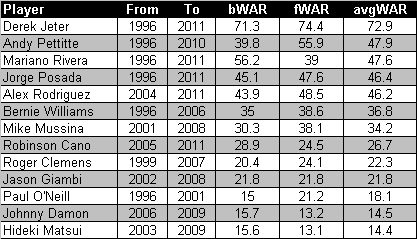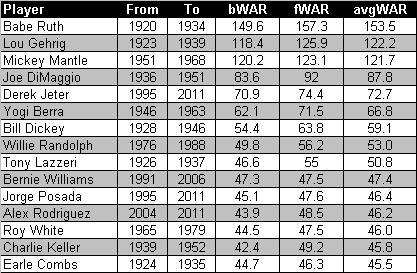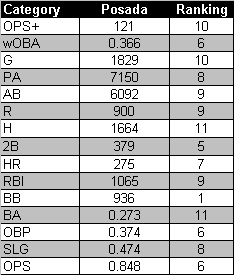And if I say to you tomorrow
Take my hand child, come with me.
To a castle I will take you
But what’s to be they say will be.
— Led Zeppelin, “What Is and What Should Never Be“
As the Penn State scandal continues to evolve, it is important to note that the grand jury investigation and report is available for reference. Will reading the grand jury report, or instructing people to do so, help make the Blogosphere and the Twitterverse more peaceful? Highly unlikely. I haven’t seen people this divided and angry over a sport-related story since the OJ Simpson trial.
How do we put into context what allegedly happened at Penn State, according to the report? Some steps are to 1) to view the progress of the story to date; 2) how the media has covered the story; and 3) examine from an academic context how the iconic status of Paterno and the culture he created in Happy Valley shaped the way the university managed – or depending on your perspective, mismanaged – the situation.
THE MYTH OF OBJECTIVITY
Objectivity requires one to step outside the bubble of the first-person point of view, assess information, determine what is fact and fiction, relevant and irrelevant, and interpret that information accordingly to construct a narrative. In this context, facts are absolute. They are cut and dry and emotionless, much like the components of a mathematical equation. Facts help derive truth, which is a more abstract concept. This story tests every fiber of what journalism students are taught. It shatters the mythology that those who cover sport – not just college football, Penn State, or Joe Paterno – have contributed in drafting.
There is an agenda supporting the way every article published in every periodical is framed, either on the writer’s part or by the organization employing said writers. On television, the number of programs parading talking heads deemed “experts” presenting their contrasting opinions in the interest of equal time passes for intelligent programming. This is not objective, nor is it journalism.
Siphoning fact from fiction and placing that information into a legal context was the task assigned to the federal grand jury that investigated the actions of former Penn State defensive coordinator Jerry Sandusky. The contents of the report are graphic, provocative, and a slew of other adjectives that cut to the core of our emotions. For those of us who are parents and entrust – or have entrusted – our children to a third party for care, it is impossible to view this story through a prism of objectivity. It conjures primitive, visceral reactions steeped in anger. But the grand jury report is only one piece to the investigative puzzle. The Patriot-News in Harrisburg has provided in-depth reporting. A timeline and the depth of knowledge of the situation among the key players is noted here.
It is under these volatile circumstances that national media organizations have flooded central Pennsylvania, piggybacking the solid journalistic efforts of the Patriot-News and turning the area known as Happy Valley into the stuff of tabloid. Joe Posnanski, who is writing a book on Joe Paterno, wrestled with his emotions and the difficulty in being objective in a strong, well-written blog post. But to those of us on the outside analyzing Posnanski’s position, given that he moved to State College, gained unfettered access to Paterno, how can he reconcile doing this book now, or at least amending the angle? This series of events, for better or worse, is now the defining piece to Paterno’s career, possibly his life, and to encourage the people who supported him for years to stand up now is naïve. Perhaps we’ve learned, through the number of sponsors that are removing themselves from Saturday’s broadcast and the power struggles between Paterno and his superiors that have come to the fore, that JoePa didn’t have the level of support that he thought; that there were people who finally stopped buying what Paterno sold.
Buzz Bissinger, who wrote his own reaction piece, tweeted: “Note to Posnanski: junk your book unless you re-report it get the Joedust out of your eyes. Your post was pathetic justification of JoePa.”
CBS’s Gregg Doyel went one further in this tweet: “Heard Joe Posnanski is on campus defending Joe Pa. Calling him a scapegoat. Smart guy. Decent writer. Total moron.”
People unconditionally – or in Posnanski’s case, conditionally – supporting Paterno, are not viewing his involvement and inaction with a sense of totality. Involving emotions in the evaluation process immediately kills objectivity. Posnanski, a veteran, respected award-winning journalist and writer, know this. He admitted as much. But he also has to realize that by continuing down this path, his own reputation is at stake.
* * *
Penn State alum Chris Korman wrote an impassioned blog Wednesday in the Baltimore Sun. In it, Korman describes his time as a student journalist at Penn State and examines the way the local and national media have covered the events while trying to reconcile his own feelings. Korman writes that while Sandusky is unquestionably the main player, the tipping point of the investigation and coverage occurred when the focus shifted to Paterno’s inolvement.
“… the Sandusky story did not gain traction when it should have. The Patriot-News, in Harrisburg, first reported that he was the subject of a grand jury investigation for the indecent assault of a teenage boy on March 31. … Yet it does not appear that any of the major news outlets now swarming campus paid much attention. Sure, Paterno had not yet been tied to the scandal. But it should have at least sent a few reporters scurrying; Sandusky, after all, remained affiliated with Penn State.”
In other words, Sandusky might be the principal player and newsmaker, but Paterno’s name value makes the story. Sandusky’s alleged actions lead to one visceral reaction; Paterno’s role in the chain of events spawns another.
YES Network’s Kimberly Jones, also a Penn State alum, has been a fixture on Mike’d Up with Mike Francesa this week. Tuesday, she discussed her time covering Penn State Football, the lack of access afforded to reporters, the insular, protective culture Paterno created and fostered in University Park, and perhaps most damningly, that Sandusky was seldom seen without kids from his Second Mile organization around him. Thursday, she commented on the lack of leadership the University has shown.
Thursday morning’s talk radio rotation featured a mixture of intelligent conversation and rancor. On WFAN, Craig Carton verbally flogged a female Penn State student who called in to give the vibe in State College, but also someone who pledged her support for Paterno, as did her parents. She mentioned she was a journalism student and wondered why reporters weren’t trailing Sandusky as he went on a shopping spree at Dick’s Sporting Goods. She said she believed Paterno didn’t do enough, but he shouldn’t be made the scapegoat, like she and many others believed the media were responsible for. It helps provide a context for the actions of Mike McQueary and his father, John (more on this later in the column).
On ESPN Radio, Mike Greenberg and Mike Golic interviewed a number of former Penn State players, asking them common softball questions, while outside the context of the interviews highlighting the young boys listed as victims in this scandal and questioning the status of Mike McQueary for Saturday’s game against Nebraska.
At present, the status of the coverage is now past Paterno, save for the question of whether or not the media were responsible for scapegoating the 84-year-old coach. JoePos told a class at Penn State he believed that to be the case. Dictionary.com defines a scapegoat as “a person or group made to bear the blame for others or to suffer in their place.” Paterno is not being made to bear blame for anyone other than himself. He is not being made to suffer for Jerry Sandusky. He is enduring the consequences of his own action and inaction.
Reading the Korman article, maybe it’s time that happened. Korman points to the culture of ignorance that existed during his time on campus, and beyond. He specifically points to an ESPN report that compiled the following figures on criminal activity involving Penn State football players from 2002-2008: 46 players were charged with 163 counts.
Stephen Mosher, Professor of Sport Studies at Ithaca College, examined Paterno through the veil of the coach’s 1989 appearance on a PBS roundtable program. Mosher writes:
“What is terrifying is that Paterno claims that, in sports, ‘you give the responsibility to the authority of others.’ And that type of reasoning is what allowed Paterno and the others in the PSU ‘chain of command’ to convince himself that he had done enough when confronted with the unspeakable horror over thirteen years ago.
No rational human being would entrust the welfare of the vulnerable to a six-year old. And that is exactly what occurs in the sport culture every single day…”
People who have played team sports, covered team sports, interviewed coaches or former coaches for a living will say that accountability starts at the top. In this case, it’s the head coach. How does that make Paterno a scapegoat? Because he was the biggest name? Now people are posting signs asking for the media to go home; that with Paterno out, the story is over and there’s nothing more to report.
But there is much more, and it is going to get much worse before it gets better. While Paterno was the most prominent domino to fall, there will be others. The next is likely McQueary. (UPDATE: A few hours after this column was posted, McQueary was placed on indefinite administrative leave, effective immediately.) A spotlight remains on the University Administration and the Board of Trustees, whose continued attempts at damage control – which are the topic of countless forums among PR professionals – have resulted in an epic fail.
DON’T MIX MY SPORTS WITH ANYTHING ELSE
Sport plays a role in culture and society, just as cultural and societal factors help forge behavior in sport. Actions in sport, both on the field and off, affect politics and business dealings. Sports are entertainment, a supposed escape. On a more humanistic note, we want to see purity in the athletic endeavor, and nothing more. In the past two weeks, we’ve had “Tebowing” and Penn State. In-your-face religion and the alleged pedophilic acts by a coach taking place on campus and what may prove to be a decade-long cover-up. The Penn State Affair is a sports story. Although the primary subject matter is not sport-related, the context of it and the key figures in the story are tied to football.
Penn State University – the football program in particular – is a cash cow. To that end, it is the most important school in the Big Ten Conference. PSU, according to an online report, has the most valuable football team in the Big Ten, and the third-most valuable in the NCAA, based on gross revenue and pure profit. Going beyond football, Penn State hosts a high number of conference championship events and because of its production facilities and student involvement, is the largest provider of content to the Big Ten Network.
Furthermore, deposed president Graham Spanier was Chairman of the Bowl Championship Series. Jay Bilas noted in an interview with Greenberg and Golic Wednesday morning that at a recent NCAA university presidents’ retreat, Spanier was touting “integrity, integrity” for the BCS Bilas then asked rhetorically, “How can he continue in his capacity?” Later in the evening, the Board of Trustees fired Spanier. In Thursday’s aftermath, NCAA President Mark Emmert issued a statement and used the word “integrity” to describe both Spanier and Paterno.
The football program, as it does for many colleges across the country – not just major Division I colleges and universities – creates the campus identity. A note from the blogosphere illustrates this fact:
“As I was driving to work this morning, I heard one of your own call in to The Herd and explain that he didn’t know how he was going to unapologetically put on the Blue and White and sing “Fight On, State” this Saturday. He’s not the only one to express that sentiment. Perhaps you’re feeling a little this way.
This is what I want to say to you. You are not Joe Paterno. You are not Tim Curley. You are not Gary Schultz. You are not Graham Spanier, and you are sure as hell not Jerry Sandusky. Their alleged sins are not your own. They may be the most recognizable faces of your beloved program, but they are not Penn State. They are not a 156 year old center of higher learning. They are not a century of football tradition. Their flaws cannot eclipse the innumerable scientific, artistic, and humanitarian contributions your university, and its 44,000 students and 570,000 living alumni have made and will continue to make to the world at large.”
An Ohio State fan wrote the open letter in an effort to show empathy resulting from the recent scandals that rocked the Buckeyes football program and led to Jim Tressel’s disgraceful dismissal. Where the letter is incorrect, sociologically speaking, is that Paterno, Sandusky, Curley and Schultz, as well as the kids taking the field on Saturday, ARE Penn State because they are the most public representatives of the institution. The program is bigger than the university. The football players and coaches are the perpetual BMOC’s. Paterno held more influence than the school President. This is true at Penn State and any other school where football reigns supreme.
SPORT DOESN’T BUILD CHARACTER
Coaches of youth sports tell kids on their teams that the work ethic, ideals, etc., learned on the field help build character outside the lines. They are tantamount to life lessons. The truth is that nature and nurture build character, not participation in sport. Good parenting and development of a moral compass build character. Does the coach who sticks the worst kid on the team in right field so he won’t have a meaningful effect on the game have character? How did sport help this coach in that respect? What led him to believe that winning a Little League game at the cost of potentially killing the confidence of that right fielder was positive? Does the kid who took the most reps in practice or spent the most time in the batting cage exhibit positive character traits when, following a disheartening loss, he says, “It’s always the bottom of the lineup that screws us”? No. It works in the reverse: you bring the personality traits you inherit and then hone as you gain life experience into the field of play.
In a guest spot with Greenberg and Golic, former Penn State linebacker Paul Posluszny, now with the Jacksonville Jaguars, talked of Paterno as a father figure and a “maker of men.” This is a common refrain among football players and how they discuss their coaches, or how any mentee views a mentor. What, then, do we conclude about the character of Mike McQueary, who played football for Paterno and has been on the coaching staff for nearly 10 years? On March 1, 2002, according to the grand jury report, McQueary witnessed Sandusky raping a 10-year-old boy in the showers of the Lasch Football Building and rather than break it up and save the child, he turned away, called his father, who advised him to report the incident to Paterno.
Sandusky worked for Joe Paterno for nearly 30 years. Did football build him into a pedophile? Tim Curley played for Paterno and rose up the ranks to become athletic director. Did sport help build his character such that the grand jury found his testimony “not credible”?
THE MYTH OF JOEPA, BUSTED
The fallout of the past several days has been thus: Paterno and Spanier are gone. Athletic Director Tim Curley and Gary Schultz, senior vice president of business and finance of the university, resigned on Sunday.
This is the trickle-down effect of what was Paterno’s “Grand Experiment.” The Korman article addressed this, specifically noting Paterno’s vision of character and the culture he sought to establish. This “Grand Experiment” helped construct the myth. We know now that the events cited in the grand jury report and continuing investigations have blown it up.
This incident now defines Paterno’s career. It’s as if the previous 30+ years leading up to the first years the Sandusky transgressions allegedly took place are moot. The public power struggle that took place Wednesday between Paterno and the Board of Trustees had a “JoePa’s Last Stand” feel to it. The BOT didn’t afford him the luxury of determining when he would exit.
Looking at the recent falls of prominent college football coaches like Bobby Bowden and Jim Tressel, negligence was their undoing. The same is true for Paterno, who despite saying he “wished he could have done more” did not act on the moral high ground that he espoused and supposedly taught his players. He only proved that he wasn’t worthy of being held to a higher standard; that he was a hypocrite.
Dave Zirin, in his initial reaction piece published Monday, wrote: “It’s tragic that it’s come to this for a legend like Joe Paterno. But it’s even more tragic that protecting his legend mattered more than stopping a child rapist in their midst.”
A community is in denial and exhibiting the five stages of grief in textbook fashion. Amid this scene in State College, Pennsylvania, there is a game against Nebraska to prepare for.
But the games can’t mask the institutional failures anymore.
[Photo Credit: Washington Post]







































